The Watervliet arsenal complex originally was built to house and manufacture weapons for the War of 1812. During the Civil War, it specialized in gun cartridges and artillery carriages. The facility today is a primary site for making state-of-the-art tank cannon, howitzers, mortars, and recoilless rifles.
USA


William Emory was an 1831 graduate of the U.S. Military Academy at West Point. When the Mexican War broke out, he was assigned as chief engineer officer to General Stephen Kearny, whose army traversed largely unknown territories in the West. The U.S. War Department would later print 10,000 copies of Emory's Notes of a Military Reconnaissance, which made a significant contribution to understanding the geography and topography of the Southwest.
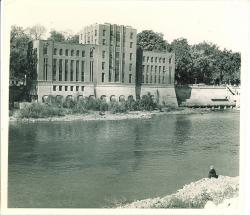
The Hydraulics Laboratory at The University of Iowa, renovated in 2001 and in 2003 renamed the C. Maxwell Stanley Hydraulics Laboratory, is the oldest university-based hydraulics laboratory in the U.S. that continuously has focused on research, education, and service in hydraulic engineering. Since its initial construction in 1919, the facility and staff have produced a massive amount of research that has shaped water-related constructs around the world. Its efforts have been guided by noted directors such as Floyd Nagler (1920-1933), Hunter Rouse (1944-1965), and John F.
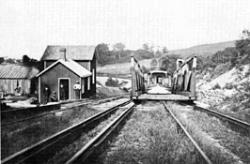
Morris Canal was built to transport coal from the Lehigh Valley of Pennsylvania to industrial markets in Newark and New York. The total length of the canal was 106 miles. The canal climbed an astonishing 914 feet from Newark Bay to the summit at Lake Hopatcong, and then dropped 760 feet to the Delaware River at Phillipsburg. This gave the canal an average vertical slope of 18 feet per mile, steep compared to the contemporary Erie Canal's relatively gentle slope of one foot per mile.
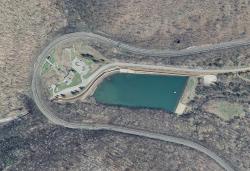
One of the earliest and most impressive of America's great railroad engineering feats, the Horseshoe Curve was built as a means of overcoming a straight-line grade over the geological feature known as the Allegheny Escarpment or Allegheny front, which separates the ridge-and-valley section of Pennsylvania (on the east) from the Allegheny Front (on the west). Such a straight-line route would have made commercial railroad operations unfeasible from both and economic and technical standpoint.

A transportation tunnel under the Hudson River connecting Manhattan and New Jersey was first considered in the 1860s, fueled by New York City's rapidly growing congestion and the inadequacy of existing ferry service to population centers across the river. DeWitt Clinton Haskin, an engineer formerly with the Union Pacific Railroad, started the project in 1874 and subsequently endured an extended lawsuit, several failures of the tunnel wall, and an exhaustion of funds before quitting in 1887 with only 1,600 feet completed.
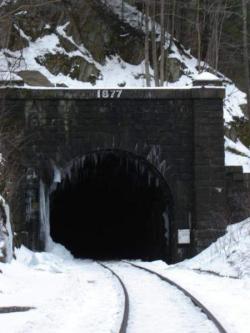
When first proposed in 1819, the Hoosac Tunnel seemed so logical. It would provide an efficient and direct route for the Boston and Albany Railroad, whose pathway meandered 20 miles along precipitous grades. Early proponents, however, could not have imagined that blasting a 4.75 mile tunnel through the Hoosac Mountain would require over 20 years of labor. The project took so long to complete that it was commonly referred to as "The Great Bore."
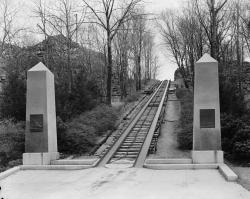
The Granite Railway Company of Quincy was the first commercial railway in the United States. Incorporated in 1826 and designed by Gridley Bryant, the railway relied on horses, rather than steam locomotives, to draw the cars along the tracks. Its primary purpose was to transport granite from Quincy to build the Bunker Hill Monument.
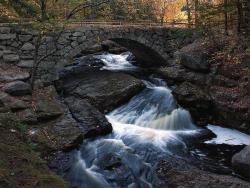
"Some of New Hampshire's most aesthetically pleasing yet least appreciated structures are stone arch bridges."

In the 19th century, New York City was a burgeoning industrial and commercial metropolis - the largest city in the United States and second largest in the world. As the city's population increased, people began to call for construction of an underground railway. Many unusual engineering challenges had to be overcome, not the least of which was construction in a dense urban area. After lengthy legal battles over property rights and the debt limit of the city, ground was broken on March 24, 1900.
Innovations

The San Jacinto Monument commemorates the decisive 1836 battle near the banks of the Buffalo Bayou and the San Jacinto River that allowed Texas to win independence from Mexico. It is the world's tallest monument, rising 15 feet higher than the Washington Monument.
In 1936, Daughters and…
Read More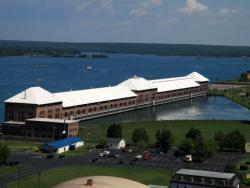
Located at the northern tip of Michigan where Lake Superior, Lake Michigan, and Lake Huron join together, the Sault Ste. Marie Hydroelectric Power Complex was built to harness the hydroelectric potential of the 20-foot falls at the headwaters of the St. Marys (sic) River, the sole outlet of…
Read More
The Savannah city plan, whose execution began in 1733, is distinguished from those of previous colonial towns by the repeated pattern of connected neighborhoods, multiple squares, streets, and designed expansion into lands held by the city. It is unique in the history of urban planning in a…
Read More
The Second Street Bridge is a simply ornamented, wrought-iron structure. It is 18 feet wide and spans 225 feet over the Kalamazoo River. It was built to replace a dilapidated wooden bridge that had served the area for nearly 50 years.
The bridge is anchored to fieldstone abutments on…
Read More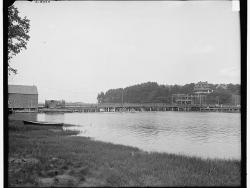
Sewall's Bridge is a singular example of an era when wooden trestle bridges carried highway traffic across New England waterways. It is the earliest pile-trestle bridge for which an authentic construction record exists, and the oldest for which builder's drawings survive. Spanning the York River…
Read More
The first commercial central electric-generating station in the United States to use nuclear energy was the Shippingport Atomic Power Station of the Department of Energy and the Duquesne Light Company. In a dramatic high-tech display, ground was broken in 1954 during dedication ceremonies by…
Read More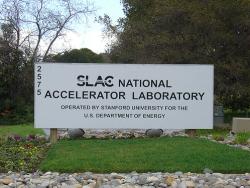
The Stanford Linear Accelerator Center was renamed in 2009 to the SLAC National Accelerator Laboratory.
Notable for: unique electromechanical devices and systems in the longest accelerator in the world
The Stanford two-mile accelerator, the longest in the world,…
Read More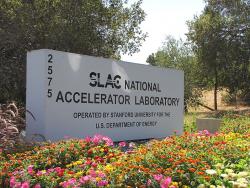
The basic research tool at SLAC is an intense beam of electrons that have been accelerated by an electric field equivalent to 30 billion volts, making this the most powerful electron beam in the world.
The two-mile linear accelerator produces this field using high-power microwaves…
Read More
Three rivers - the Allegheny, Monongahela, and Ohio - join in Pittsburgh, making the city a natural site for the building of bridges. But the Smithfield Street Bridge stands apart from other Pittsburgh bridges for several reasons: it replaced structures by two well-known bridge engineers, Lewis…
Read More
This was one of the first power facilities to demonstrate the feasibility of long distance electric power transmission. Through an elaborate switchboard at the main station, tied to similar boards at substations, a complete circuit was created to drive an electric motor 153 miles from the…
Read More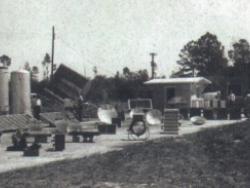
This highly diverse facility has pioneered the development of solar energy applications worldwide. The Solar Energy and Energy Conversion Laboratory (SEECL) was unique in developing practical solar energy devices based on established principles of thermodynamics, heat transfer, and fluid…
Read More
George Washington's concern over standardization of rifles for the Continental Army led to the formation of national armory and to his selection of Springfield as its site. Completed in 1794, it was the first national armory in the United States. Like the Robbins and Lawrence Armory, the…
Read More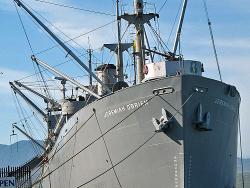
The SS Jeremiah O'Brien, an emergency cargo vessel of the type EC2-S-C1 better known as Liberty Ships, is one of two operative survivors of 2,751 ships, the largest fleet of single class ever built. The other is the SS John W. Brown, now in Baltimore (not operative at the time of the landmark…
Read More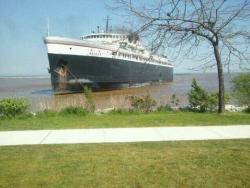
The two 3,500-hp steeple compound Unaflow steam engines powering the S.S. Badger represent one of the last types of reciprocating marine steam engines. Built by the Skinner Engine Company, most Unaflow engines are single expansion. These feature tandem high- and low-pressure cylinders separated…
Read More
The St. Charles Avenue Streetcar Line is the oldest surviving interurban-urban passenger rail transportation system in the United States. Originally incorporated as the New Orleans Carrollton Rail Road in 1833, service began in 1835. A variety of motive power had been used including horses,…
Read More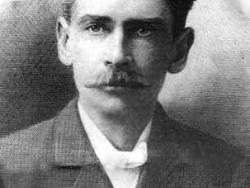
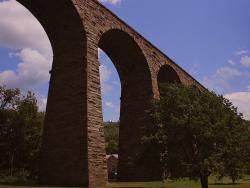
The Starrucca Viaduct of the Erie Railroad Company crosses Starrucca Creek in Lanesboro, Pennsylvania. It is one of the oldest and one of the longest railroad bridges in Pennsylvania. Its 18 slender, semicircular stone arches each span 50 feet and the structure rises 110 feet above the creek.…
Read More
Sculptor Frederic-Auguste Bartholdi is credited with bringing the concept of the Statue of Liberty to fruition, deriving inspiration from the 19th-century penchance for grandiose monuments. He originally designed the statue for placement at the Suez Canal, but the project was never commissioned…
Read More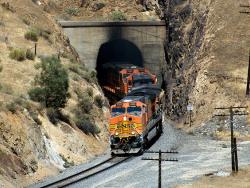
The Tehachapi Pass Railroad Line was cut through solid and decomposed granite by about 3,000 Chinese laborers using nothing more than picks, shovels, horse drawn carts, and blasting powder. This line, which rises from the San Joaquin Valley and through the Tehachapi Mountains, originally…
Read Morehe Automatic Temperature Control System was named as a Historic Mechanical Engineering Landmark in 2008. Warren S. Johnson came up with the idea for automatic temperature control while teaching at Normal School in Whitewater, Wisconsin in the 1880's. Originally, janitors would have to enter each…
Read More

